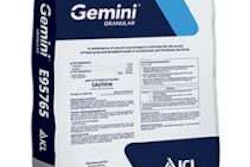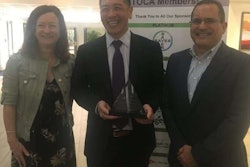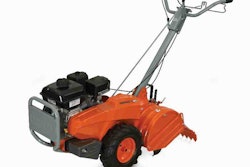 Keep It Green Landscaping holds a safety training meeting.
Keep It Green Landscaping holds a safety training meeting.Photo: Keep It Green Landscaping
The National Association of Landscape Professionals’ Safety Recognition Awards Program is designed to reward landscape industry professionals who consistently demonstrate their commitment to safety.
Keep It Green Landscaping in Fair Lawn, New Jersey, has won Best of the Best for the past five years in a row.
“I always tell people there’s not one single thing they can do to make their company a safe place to work,” Dyle MacGregor, company president, told NALP. “Being safe is a culture. It applies to most everything you do, and everyone has to have buy in.”
The company requires pre-employment drug tests and all the drivers are randomly tested for drugs. Once the drug testing requirement was added to its help-wanted ads, MacGregor said the number of calls dropped, but the quality increased.
MacGregor stressed that being safe begins with the hiring process where he learns how much safety training an individual has received.
“Our safety program requires all employees to read our handbook and understand our safety culture. We require them to wear PPE (personal protective equipment) and warn them twice if they don’t. They don’t get three strikes and continue to work for us.
“Rutgers offers continuing education courses that stress safety practices when operating chain saws and other equipment. Manufacturers, too, offer classes on the subject. We send employees to seminars and classes. Upon their return, they share experiences with team members.
“Machines don’t have a conscious and they will do virtually anything an operator asks of them,” he said. “It seems the people most vulnerable are younger employees who think they are invincible and will never get injured. One way we get the message to them is to circulate articles about accidents and then discuss how they could have been avoided. Again, being safe requires everyone to have buy in, new and veteran employees alike.”
Peer pressure
For the last 24 years, Rich Arlington, president of Arlington Lawncare & Landscape in Lake City, Pennsylvania, has employed peer pressure to help create a safety culture buy in.
“You don’t want employees hurt, and from a purely business perspective, injuries and accidents are costly,” Arlington said. “At the very least, they are responsible for lost production and insurance rate hikes. Companies that put an emphasis on being efficient must also put an emphasis on being safe.”
Arlington’s company has seven crews, each with a safety advisor. It’s that individual’s responsibility to ensure crew members wear PPE and follow safety protocols.
“Crew members aspire to that position,” said Arlington. “It not only gives them a sense of ownership, every quarter we give out safety bonuses for crews and the advisor gets 10 percent more.”
While the safety advisor keeps the crew in line, all crew members understand it’s ultimately their responsibility to be safe and ensure a safety bonus.
While Arlington gives much of the credit for an impressive safety record, one that includes no accidents or injuries for 12 years and back to back Best of the Best safety awards, to peer pressure, it’s not the only catalyst. His company has a complete safety manual and a special safety orientation for new employees. The two-day session involves both power point presentations and hands-on with equipment.
There are also tailgate meetings every Monday and several educational opportunities with OSHA safety classes. He noted his insurance company also sends safety updates twice a year.
“If there’s one thing I impress on employees, it’s up to them to be safe,” Arlington said. “If they can make time to do something that’s rather unimportant, then they can certainly make time to do something that is important, to work in a safe manner. Applying peer pressure, along with other elements of our safety program, encourages them to make that all-important decision.”
EDITOR’S NOTE: Rod Dickens interviewed these two winners for NALP’s Landscape Industry Essentials newsletter.









